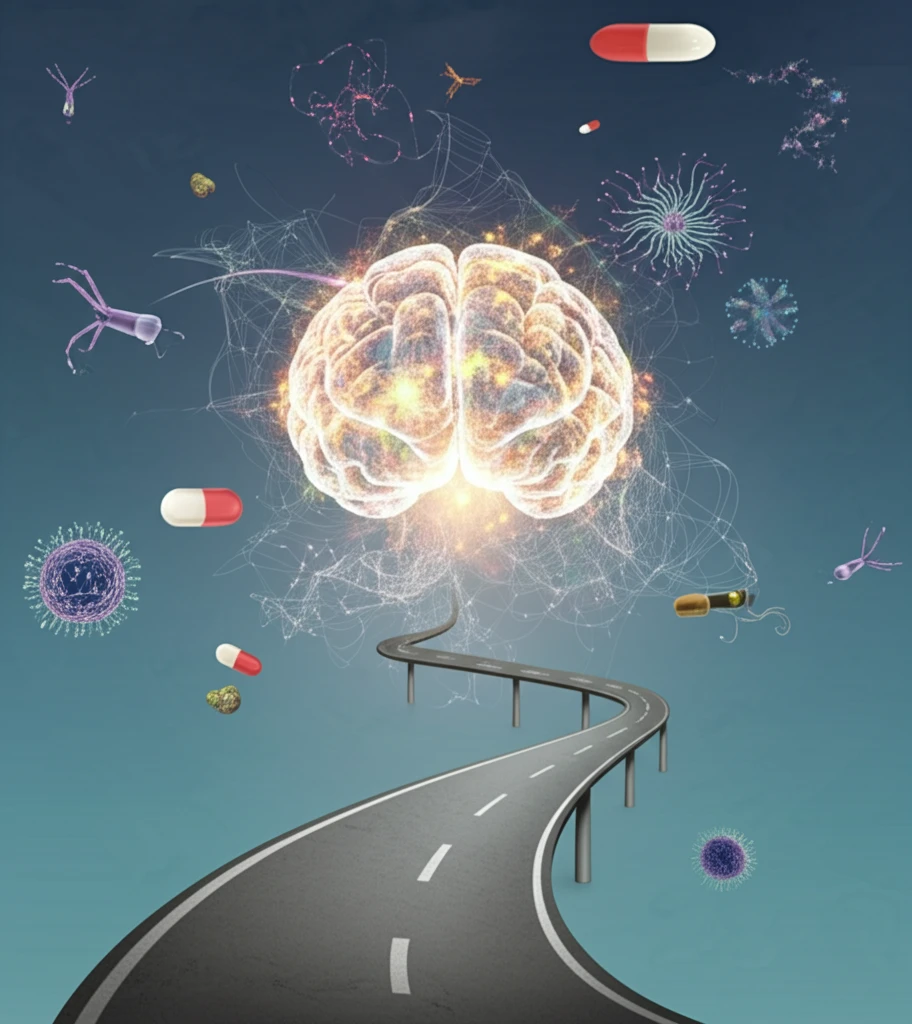
Unlocking Hope: The Future of Depression Treatment and Psychiatric Drug Development
"Explore the evolution of psychiatric medications, from chance discoveries to targeted therapies, and how these advancements are paving the way for more effective treatments for depression and other mental health conditions."
The journey of psychiatric drug development is a fascinating tale of serendipity, scientific refinement, and unwavering hope. For decades, mental health treatment relied heavily on medications discovered by chance, often with limited understanding of their mechanisms. Today, we stand on the cusp of a new era, driven by deeper insights into brain biology and the potential for targeted therapies.
This evolution is particularly evident in the treatment of depression. Early antidepressants, while effective for some, left a significant portion of patients unresponsive. Treatment-resistant depression (TRD) became a major challenge, spurring research into novel mechanisms of action. The emergence of drugs like esketamine, with its unique approach to modulating glutamate NMDA receptors, marks a significant turning point.
This article delves into the history of psychiatric drug development, focusing on antidepressants and the shift from chance discoveries to rational design. We'll explore the challenges, celebrate the successes, and examine the exciting possibilities that lie ahead for treating depression and other mental health conditions.
From Serendipity to Science: How Psychiatric Drugs Evolved

The early days of psychiatric drug development were marked by fortunate accidents. Chlorpromazine, initially intended as an antihistamine, was found to have antipsychotic properties, paving the way for a new class of medications. Similarly, the first tricyclic antidepressants (TCAs) emerged from failed attempts to create better antipsychotics.
- Tricyclic Antidepressants (TCAs): These early antidepressants primarily worked by blocking the reuptake of serotonin and norepinephrine, increasing their availability in the brain.
- Monoamine Oxidase Inhibitors (MAOIs): MAOIs inhibited the enzyme that breaks down neurotransmitters, also increasing their levels in the brain.
- Selective Serotonin Reuptake Inhibitors (SSRIs): SSRIs revolutionized depression treatment by selectively targeting serotonin, resulting in fewer side effects than TCAs.
- Serotonin-Norepinephrine Reuptake Inhibitors (SNRIs): SNRIs offered a dual-action approach, targeting both serotonin and norepinephrine.
A Brighter Future for Mental Health Treatment
The journey of psychiatric drug development has been long and winding, but the progress made is undeniable. From the chance discoveries of early medications to the targeted therapies of today, we are constantly learning more about the complexities of the brain and how to treat mental health conditions effectively. The future holds immense promise, with ongoing research and innovative approaches paving the way for even more personalized and effective treatments.
